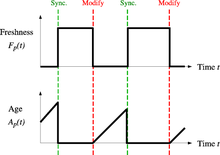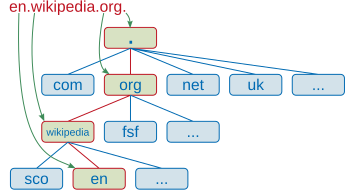

Maximise your business potential with Parramatta conversion optimisation We deliver impactful strategies designed to boost your brand awareness, improve online visibility, and generate a steady flow of qualified leads in Parramatta
Take your digital presence further with Parramatta marketing funnel We develop custom strategies aimed at increasing your online visibility, improving search engine rankings, and achieving sustainable growth for your Parramatta-based business
Experience outstanding online performance through Optimised website content Parramatta Our expert team specialises in delivering solutions that improve rankings, drive engagement, and generate valuable leads for consistent business growth in Parramatta
Best SEO Agency Parramatta Australia. Best SEO Parramatta Agency.Experience outstanding online performance through Top web developers Parramatta Our expert team specialises in delivering solutions that improve rankings, drive engagement, and generate valuable leads for consistent business growth in Parramatta
Maximise your business potential with Digital agency Parramatta We deliver impactful strategies designed to boost your brand awareness, improve online visibility, and generate a steady flow of qualified leads in Parramatta
Choose excellence in digital marketing with Search visibility Parramatta Our proven approaches drive website traffic, enhance customer engagement, and significantly improve conversion rates, supporting long-term business success in Parramatta
Effective Web Design Parramatta Sydney.Maximise your business potential with Web and SEO consulting Parramatta We deliver impactful strategies designed to boost your brand awareness, improve online visibility, and generate a steady flow of qualified leads in Parramatta
Experience outstanding online performance through Parramatta design and development Our expert team specialises in delivering solutions that improve rankings, drive engagement, and generate valuable leads for consistent business growth in Parramatta
Choose excellence in digital marketing with Results-driven SEO Parramatta Our proven approaches drive website traffic, enhance customer engagement, and significantly improve conversion rates, supporting long-term business success in Parramatta
Best Local SEO Parramatta.

Transform your business growth with SEO Parramatta Our strategies enhance visibility, attract targeted traffic, and maximise conversions for sustained success Partner with us for measurable digital marketing outcomes today
Take your digital presence further with Web Design Parramatta We develop custom strategies aimed at increasing your online visibility, improving search engine rankings, and achieving sustainable growth for your Parramatta-based business
Experience outstanding online performance through Local SEO Parramatta Our expert team specialises in delivering solutions that improve rankings, drive engagement, and generate valuable leads for consistent business growth in Parramatta
range of SEO Packages Parramatta Sydney.Choose excellence in digital marketing with Parramatta SEO services Our proven approaches drive website traffic, enhance customer engagement, and significantly improve conversion rates, supporting long-term business success in Parramatta
Take your digital presence further with Parramatta web design agency We develop custom strategies aimed at increasing your online visibility, improving search engine rankings, and achieving sustainable growth for your Parramatta-based business
Experience outstanding online performance through Search Engine Optimisation Parramatta Our expert team specialises in delivering solutions that improve rankings, drive engagement, and generate valuable leads for consistent business growth in Parramatta
Top Digital Marketing Parramatta NSW.

Maximise your business potential with Affordable SEO Parramatta We deliver impactful strategies designed to boost your brand awareness, improve online visibility, and generate a steady flow of qualified leads in Parramatta
Take your digital presence further with Custom web design Parramatta We develop custom strategies aimed at increasing your online visibility, improving search engine rankings, and achieving sustainable growth for your Parramatta-based business
Experience outstanding online performance through eCommerce web design Parramatta Our expert team specialises in delivering solutions that improve rankings, drive engagement, and generate valuable leads for consistent business growth in Parramatta
Transform your business growth with Parramatta digital marketing Our strategies enhance visibility, attract targeted traffic, and maximise conversions for sustained success Partner with us for measurable digital marketing outcomes today
Maximise your business potential with Best SEO agency Parramatta We deliver impactful strategies designed to boost your brand awareness, improve online visibility, and generate a steady flow of qualified leads in Parramatta
Choose excellence in digital marketing with SEO expert Parramatta Our proven approaches drive website traffic, enhance customer engagement, and significantly improve conversion rates, supporting long-term business success in Parramatta


A Web crawler, sometimes called a spider or spiderbot and often shortened to crawler, is an Internet bot that systematically browses the World Wide Web and that is typically operated by search engines for the purpose of Web indexing (web spidering).[1]
Web search engines and some other websites use Web crawling or spidering software to update their web content or indices of other sites' web content. Web crawlers copy pages for processing by a search engine, which indexes the downloaded pages so that users can search more efficiently.
Crawlers consume resources on visited systems and often visit sites unprompted. Issues of schedule, load, and "politeness" come into play when large collections of pages are accessed. Mechanisms exist for public sites not wishing to be crawled to make this known to the crawling agent. For example, including a robots.txt file can request bots to index only parts of a website, or nothing at all.
The number of Internet pages is extremely large; even the largest crawlers fall short of making a complete index. For this reason, search engines struggled to give relevant search results in the early years of the World Wide Web, before 2000. Today, relevant results are given almost instantly.
Crawlers can validate hyperlinks and HTML code. They can also be used for web scraping and data-driven programming.
A web crawler is also known as a spider,[2] an ant, an automatic indexer,[3] or (in the FOAF software context) a Web scutter.[4]
A Web crawler starts with a list of URLs to visit. Those first URLs are called the seeds. As the crawler visits these URLs, by communicating with web servers that respond to those URLs, it identifies all the hyperlinks in the retrieved web pages and adds them to the list of URLs to visit, called the crawl frontier. URLs from the frontier are recursively visited according to a set of policies. If the crawler is performing archiving of websites (or web archiving), it copies and saves the information as it goes. The archives are usually stored in such a way they can be viewed, read and navigated as if they were on the live web, but are preserved as 'snapshots'.[5]
The archive is known as the repository and is designed to store and manage the collection of web pages. The repository only stores HTML pages and these pages are stored as distinct files. A repository is similar to any other system that stores data, like a modern-day database. The only difference is that a repository does not need all the functionality offered by a database system. The repository stores the most recent version of the web page retrieved by the crawler.[citation needed]
The large volume implies the crawler can only download a limited number of the Web pages within a given time, so it needs to prioritize its downloads. The high rate of change can imply the pages might have already been updated or even deleted.
The number of possible URLs crawled being generated by server-side software has also made it difficult for web crawlers to avoid retrieving duplicate content. Endless combinations of HTTP GET (URL-based) parameters exist, of which only a small selection will actually return unique content. For example, a simple online photo gallery may offer three options to users, as specified through HTTP GET parameters in the URL. If there exist four ways to sort images, three choices of thumbnail size, two file formats, and an option to disable user-provided content, then the same set of content can be accessed with 48 different URLs, all of which may be linked on the site. This mathematical combination creates a problem for crawlers, as they must sort through endless combinations of relatively minor scripted changes in order to retrieve unique content.
As Edwards et al. noted, "Given that the bandwidth for conducting crawls is neither infinite nor free, it is becoming essential to crawl the Web in not only a scalable, but efficient way, if some reasonable measure of quality or freshness is to be maintained."[6] A crawler must carefully choose at each step which pages to visit next.
The behavior of a Web crawler is the outcome of a combination of policies:[7]
Given the current size of the Web, even large search engines cover only a portion of the publicly available part. A 2009 study showed even large-scale search engines index no more than 40–70% of the indexable Web;[8] a previous study by Steve Lawrence and Lee Giles showed that no search engine indexed more than 16% of the Web in 1999.[9] As a crawler always downloads just a fraction of the Web pages, it is highly desirable for the downloaded fraction to contain the most relevant pages and not just a random sample of the Web.
This requires a metric of importance for prioritizing Web pages. The importance of a page is a function of its intrinsic quality, its popularity in terms of links or visits, and even of its URL (the latter is the case of vertical search engines restricted to a single top-level domain, or search engines restricted to a fixed Web site). Designing a good selection policy has an added difficulty: it must work with partial information, as the complete set of Web pages is not known during crawling.
Junghoo Cho et al. made the first study on policies for crawling scheduling. Their data set was a 180,000-pages crawl from the stanford.edu domain, in which a crawling simulation was done with different strategies.[10] The ordering metrics tested were breadth-first, backlink count and partial PageRank calculations. One of the conclusions was that if the crawler wants to download pages with high Pagerank early during the crawling process, then the partial Pagerank strategy is the better, followed by breadth-first and backlink-count. However, these results are for just a single domain. Cho also wrote his PhD dissertation at Stanford on web crawling.[11]
Najork and Wiener performed an actual crawl on 328 million pages, using breadth-first ordering.[12] They found that a breadth-first crawl captures pages with high Pagerank early in the crawl (but they did not compare this strategy against other strategies). The explanation given by the authors for this result is that "the most important pages have many links to them from numerous hosts, and those links will be found early, regardless of on which host or page the crawl originates."
Abiteboul designed a crawling strategy based on an algorithm called OPIC (On-line Page Importance Computation).[13] In OPIC, each page is given an initial sum of "cash" that is distributed equally among the pages it points to. It is similar to a PageRank computation, but it is faster and is only done in one step. An OPIC-driven crawler downloads first the pages in the crawling frontier with higher amounts of "cash". Experiments were carried in a 100,000-pages synthetic graph with a power-law distribution of in-links. However, there was no comparison with other strategies nor experiments in the real Web.
Boldi et al. used simulation on subsets of the Web of 40 million pages from the .it domain and 100 million pages from the WebBase crawl, testing breadth-first against depth-first, random ordering and an omniscient strategy. The comparison was based on how well PageRank computed on a partial crawl approximates the true PageRank value. Some visits that accumulate PageRank very quickly (most notably, breadth-first and the omniscient visit) provide very poor progressive approximations.[14][15]
Baeza-Yates et al. used simulation on two subsets of the Web of 3 million pages from the .gr and .cl domain, testing several crawling strategies.[16] They showed that both the OPIC strategy and a strategy that uses the length of the per-site queues are better than breadth-first crawling, and that it is also very effective to use a previous crawl, when it is available, to guide the current one.
Daneshpajouh et al. designed a community based algorithm for discovering good seeds.[17] Their method crawls web pages with high PageRank from different communities in less iteration in comparison with crawl starting from random seeds. One can extract good seed from a previously-crawled-Web graph using this new method. Using these seeds, a new crawl can be very effective.
A crawler may only want to seek out HTML pages and avoid all other MIME types. In order to request only HTML resources, a crawler may make an HTTP HEAD request to determine a Web resource's MIME type before requesting the entire resource with a GET request. To avoid making numerous HEAD requests, a crawler may examine the URL and only request a resource if the URL ends with certain characters such as .html, .htm, .asp, .aspx, .php, .jsp, .jspx or a slash. This strategy may cause numerous HTML Web resources to be unintentionally skipped.
Some crawlers may also avoid requesting any resources that have a "?" in them (are dynamically produced) in order to avoid spider traps that may cause the crawler to download an infinite number of URLs from a Web site. This strategy is unreliable if the site uses URL rewriting to simplify its URLs.
Crawlers usually perform some type of URL normalization in order to avoid crawling the same resource more than once. The term URL normalization, also called URL canonicalization, refers to the process of modifying and standardizing a URL in a consistent manner. There are several types of normalization that may be performed including conversion of URLs to lowercase, removal of "." and ".." segments, and adding trailing slashes to the non-empty path component.[18]
Some crawlers intend to download/upload as many resources as possible from a particular web site. So path-ascending crawler was introduced that would ascend to every path in each URL that it intends to crawl.[19] For example, when given a seed URL of http://llama.org/hamster/monkey/page.html, it will attempt to crawl /hamster/monkey/, /hamster/, and /. Cothey found that a path-ascending crawler was very effective in finding isolated resources, or resources for which no inbound link would have been found in regular crawling.
The importance of a page for a crawler can also be expressed as a function of the similarity of a page to a given query. Web crawlers that attempt to download pages that are similar to each other are called focused crawler or topical crawlers. The concepts of topical and focused crawling were first introduced by Filippo Menczer[20][21] and by Soumen Chakrabarti et al.[22]
The main problem in focused crawling is that in the context of a Web crawler, we would like to be able to predict the similarity of the text of a given page to the query before actually downloading the page. A possible predictor is the anchor text of links; this was the approach taken by Pinkerton[23] in the first web crawler of the early days of the Web. Diligenti et al.[24] propose using the complete content of the pages already visited to infer the similarity between the driving query and the pages that have not been visited yet. The performance of a focused crawling depends mostly on the richness of links in the specific topic being searched, and a focused crawling usually relies on a general Web search engine for providing starting points.
An example of the focused crawlers are academic crawlers, which crawls free-access academic related documents, such as the citeseerxbot, which is the crawler of CiteSeerX search engine. Other academic search engines are Google Scholar and Microsoft Academic Search etc. Because most academic papers are published in PDF formats, such kind of crawler is particularly interested in crawling PDF, PostScript files, Microsoft Word including their zipped formats. Because of this, general open-source crawlers, such as Heritrix, must be customized to filter out other MIME types, or a middleware is used to extract these documents out and import them to the focused crawl database and repository.[25] Identifying whether these documents are academic or not is challenging and can add a significant overhead to the crawling process, so this is performed as a post crawling process using machine learning or regular expression algorithms. These academic documents are usually obtained from home pages of faculties and students or from publication page of research institutes. Because academic documents make up only a small fraction of all web pages, a good seed selection is important in boosting the efficiencies of these web crawlers.[26] Other academic crawlers may download plain text and HTML files, that contains metadata of academic papers, such as titles, papers, and abstracts. This increases the overall number of papers, but a significant fraction may not provide free PDF downloads.
Another type of focused crawlers is semantic focused crawler, which makes use of domain ontologies to represent topical maps and link Web pages with relevant ontological concepts for the selection and categorization purposes.[27] In addition, ontologies can be automatically updated in the crawling process. Dong et al.[28] introduced such an ontology-learning-based crawler using a support-vector machine to update the content of ontological concepts when crawling Web pages.
The Web has a very dynamic nature, and crawling a fraction of the Web can take weeks or months. By the time a Web crawler has finished its crawl, many events could have happened, including creations, updates, and deletions.
From the search engine's point of view, there is a cost associated with not detecting an event, and thus having an outdated copy of a resource. The most-used cost functions are freshness and age.[29]
Freshness: This is a binary measure that indicates whether the local copy is accurate or not. The freshness of a page p in the repository at time t is defined as:
Age: This is a measure that indicates how outdated the local copy is. The age of a page p in the repository, at time t is defined as:
Coffman et al. worked with a definition of the objective of a Web crawler that is equivalent to freshness, but use a different wording: they propose that a crawler must minimize the fraction of time pages remain outdated. They also noted that the problem of Web crawling can be modeled as a multiple-queue, single-server polling system, on which the Web crawler is the server and the Web sites are the queues. Page modifications are the arrival of the customers, and switch-over times are the interval between page accesses to a single Web site. Under this model, mean waiting time for a customer in the polling system is equivalent to the average age for the Web crawler.[30]
The objective of the crawler is to keep the average freshness of pages in its collection as high as possible, or to keep the average age of pages as low as possible. These objectives are not equivalent: in the first case, the crawler is just concerned with how many pages are outdated, while in the second case, the crawler is concerned with how old the local copies of pages are.

Two simple re-visiting policies were studied by Cho and Garcia-Molina:[31]
In both cases, the repeated crawling order of pages can be done either in a random or a fixed order.
Cho and Garcia-Molina proved the surprising result that, in terms of average freshness, the uniform policy outperforms the proportional policy in both a simulated Web and a real Web crawl. Intuitively, the reasoning is that, as web crawlers have a limit to how many pages they can crawl in a given time frame, (1) they will allocate too many new crawls to rapidly changing pages at the expense of less frequently updating pages, and (2) the freshness of rapidly changing pages lasts for shorter period than that of less frequently changing pages. In other words, a proportional policy allocates more resources to crawling frequently updating pages, but experiences less overall freshness time from them.
To improve freshness, the crawler should penalize the elements that change too often.[32] The optimal re-visiting policy is neither the uniform policy nor the proportional policy. The optimal method for keeping average freshness high includes ignoring the pages that change too often, and the optimal for keeping average age low is to use access frequencies that monotonically (and sub-linearly) increase with the rate of change of each page. In both cases, the optimal is closer to the uniform policy than to the proportional policy: as Coffman et al. note, "in order to minimize the expected obsolescence time, the accesses to any particular page should be kept as evenly spaced as possible".[30] Explicit formulas for the re-visit policy are not attainable in general, but they are obtained numerically, as they depend on the distribution of page changes. Cho and Garcia-Molina show that the exponential distribution is a good fit for describing page changes,[32] while Ipeirotis et al. show how to use statistical tools to discover parameters that affect this distribution.[33] The re-visiting policies considered here regard all pages as homogeneous in terms of quality ("all pages on the Web are worth the same"), something that is not a realistic scenario, so further information about the Web page quality should be included to achieve a better crawling policy.
Crawlers can retrieve data much quicker and in greater depth than human searchers, so they can have a crippling impact on the performance of a site. If a single crawler is performing multiple requests per second and/or downloading large files, a server can have a hard time keeping up with requests from multiple crawlers.
As noted by Koster, the use of Web crawlers is useful for a number of tasks, but comes with a price for the general community.[34] The costs of using Web crawlers include:
A partial solution to these problems is the robots exclusion protocol, also known as the robots.txt protocol that is a standard for administrators to indicate which parts of their Web servers should not be accessed by crawlers.[35] This standard does not include a suggestion for the interval of visits to the same server, even though this interval is the most effective way of avoiding server overload. Recently commercial search engines like Google, Ask Jeeves, MSN and Yahoo! Search are able to use an extra "Crawl-delay:" parameter in the robots.txt file to indicate the number of seconds to delay between requests.
The first proposed interval between successive pageloads was 60 seconds.[36] However, if pages were downloaded at this rate from a website with more than 100,000 pages over a perfect connection with zero latency and infinite bandwidth, it would take more than 2 months to download only that entire Web site; also, only a fraction of the resources from that Web server would be used.
Cho uses 10 seconds as an interval for accesses,[31] and the WIRE crawler uses 15 seconds as the default.[37] The MercatorWeb crawler follows an adaptive politeness policy: if it took t seconds to download a document from a given server, the crawler waits for 10t seconds before downloading the next page.[38] Dill et al. use 1 second.[39]
For those using Web crawlers for research purposes, a more detailed cost-benefit analysis is needed and ethical considerations should be taken into account when deciding where to crawl and how fast to crawl.[40]
Anecdotal evidence from access logs shows that access intervals from known crawlers vary between 20 seconds and 3–4 minutes. It is worth noticing that even when being very polite, and taking all the safeguards to avoid overloading Web servers, some complaints from Web server administrators are received. Sergey Brin and Larry Page noted in 1998, "... running a crawler which connects to more than half a million servers ... generates a fair amount of e-mail and phone calls. Because of the vast number of people coming on line, there are always those who do not know what a crawler is, because this is the first one they have seen."[41]
A parallel crawler is a crawler that runs multiple processes in parallel. The goal is to maximize the download rate while minimizing the overhead from parallelization and to avoid repeated downloads of the same page. To avoid downloading the same page more than once, the crawling system requires a policy for assigning the new URLs discovered during the crawling process, as the same URL can be found by two different crawling processes.

A crawler must not only have a good crawling strategy, as noted in the previous sections, but it should also have a highly optimized architecture.
Shkapenyuk and Suel noted that:[42]
While it is fairly easy to build a slow crawler that downloads a few pages per second for a short period of time, building a high-performance system that can download hundreds of millions of pages over several weeks presents a number of challenges in system design, I/O and network efficiency, and robustness and manageability.
Web crawlers are a central part of search engines, and details on their algorithms and architecture are kept as business secrets. When crawler designs are published, there is often an important lack of detail that prevents others from reproducing the work. There are also emerging concerns about "search engine spamming", which prevent major search engines from publishing their ranking algorithms.
While most of the website owners are keen to have their pages indexed as broadly as possible to have strong presence in search engines, web crawling can also have unintended consequences and lead to a compromise or data breach if a search engine indexes resources that should not be publicly available, or pages revealing potentially vulnerable versions of software.
Apart from standard web application security recommendations website owners can reduce their exposure to opportunistic hacking by only allowing search engines to index the public parts of their websites (with robots.txt) and explicitly blocking them from indexing transactional parts (login pages, private pages, etc.).
Web crawlers typically identify themselves to a Web server by using the User-agent field of an HTTP request. Web site administrators typically examine their Web servers' log and use the user agent field to determine which crawlers have visited the web server and how often. The user agent field may include a URL where the Web site administrator may find out more information about the crawler. Examining Web server log is tedious task, and therefore some administrators use tools to identify, track and verify Web crawlers. Spambots and other malicious Web crawlers are unlikely to place identifying information in the user agent field, or they may mask their identity as a browser or other well-known crawler.
Web site administrators prefer Web crawlers to identify themselves so that they can contact the owner if needed. In some cases, crawlers may be accidentally trapped in a crawler trap or they may be overloading a Web server with requests, and the owner needs to stop the crawler. Identification is also useful for administrators that are interested in knowing when they may expect their Web pages to be indexed by a particular search engine.
A vast amount of web pages lie in the deep or invisible web.[43] These pages are typically only accessible by submitting queries to a database, and regular crawlers are unable to find these pages if there are no links that point to them. Google's Sitemaps protocol and mod oai[44] are intended to allow discovery of these deep-Web resources.
Deep web crawling also multiplies the number of web links to be crawled. Some crawlers only take some of the URLs in <a href="URL"> form. In some cases, such as the Googlebot, Web crawling is done on all text contained inside the hypertext content, tags, or text.
Strategic approaches may be taken to target deep Web content. With a technique called screen scraping, specialized software may be customized to automatically and repeatedly query a given Web form with the intention of aggregating the resulting data. Such software can be used to span multiple Web forms across multiple Websites. Data extracted from the results of one Web form submission can be taken and applied as input to another Web form thus establishing continuity across the Deep Web in a way not possible with traditional web crawlers.[45]
Pages built on AJAX are among those causing problems to web crawlers. Google has proposed a format of AJAX calls that their bot can recognize and index.[46]
There are a number of "visual web scraper/crawler" products available on the web which will crawl pages and structure data into columns and rows based on the users requirements. One of the main difference between a classic and a visual crawler is the level of programming ability required to set up a crawler. The latest generation of "visual scrapers" remove the majority of the programming skill needed to be able to program and start a crawl to scrape web data.
The visual scraping/crawling method relies on the user "teaching" a piece of crawler technology, which then follows patterns in semi-structured data sources. The dominant method for teaching a visual crawler is by highlighting data in a browser and training columns and rows. While the technology is not new, for example it was the basis of Needlebase which has been bought by Google (as part of a larger acquisition of ITA Labs[47]), there is continued growth and investment in this area by investors and end-users.[citation needed]
The following is a list of published crawler architectures for general-purpose crawlers (excluding focused web crawlers), with a brief description that includes the names given to the different components and outstanding features:
The following web crawlers are available, for a price::
cite book: CS1 maint: multiple names: authors list (link)cite journal: Cite journal requires |journal= (help)cite journal: Cite journal requires |journal= (help)

In the Internet, a domain name is a string that identifies a realm of administrative autonomy, authority or control. Domain names are often used to identify services provided through the Internet, such as websites, email services and more. Domain names are used in various networking contexts and for application-specific naming and addressing purposes. In general, a domain name identifies a network domain or an Internet Protocol (IP) resource, such as a personal computer used to access the Internet, or a server computer.
Domain names are formed by the rules and procedures of the Domain Name System (DNS). Any name registered in the DNS is a domain name. Domain names are organized in subordinate levels (subdomains) of the DNS root domain, which is nameless. The first-level set of domain names are the top-level domains (TLDs), including the generic top-level domains (gTLDs), such as the prominent domains com, info, net, edu, and org, and the country code top-level domains (ccTLDs). Below these top-level domains in the DNS hierarchy are the second-level and third-level domain names that are typically open for reservation by end-users who wish to connect local area networks to the Internet, create other publicly accessible Internet resources or run websites, such as "wikipedia.org". The registration of a second- or third-level domain name is usually administered by a domain name registrar who sell its services to the public.
A fully qualified domain name (FQDN) is a domain name that is completely specified with all labels in the hierarchy of the DNS, having no parts omitted. Traditionally a FQDN ends in a dot (.) to denote the top of the DNS tree.[1] Labels in the Domain Name System are case-insensitive, and may therefore be written in any desired capitalization method, but most commonly domain names are written in lowercase in technical contexts.[2] A hostname is a domain name that has at least one associated IP address.
Domain names serve to identify Internet resources, such as computers, networks, and services, with a text-based label that is easier to memorize than the numerical addresses used in the Internet protocols. A domain name may represent entire collections of such resources or individual instances. Individual Internet host computers use domain names as host identifiers, also called hostnames. The term hostname is also used for the leaf labels in the domain name system, usually without further subordinate domain name space. Hostnames appear as a component in Uniform Resource Locators (URLs) for Internet resources such as websites (e.g., en.wikipedia.org).
Domain names are also used as simple identification labels to indicate ownership or control of a resource. Such examples are the realm identifiers used in the Session Initiation Protocol (SIP), the Domain Keys used to verify DNS domains in e-mail systems, and in many other Uniform Resource Identifiers (URIs).
An important function of domain names is to provide easily recognizable and memorizable names to numerically addressed Internet resources. This abstraction allows any resource to be moved to a different physical location in the address topology of the network, globally or locally in an intranet. Such a move usually requires changing the IP address of a resource and the corresponding translation of this IP address to and from its domain name.
Domain names are used to establish a unique identity. Organizations can choose a domain name that corresponds to their name, helping Internet users to reach them easily.
A generic domain is a name that defines a general category, rather than a specific or personal instance, for example, the name of an industry, rather than a company name. Some examples of generic names are books.com, music.com, and travel.info. Companies have created brands based on generic names, and such generic domain names may be valuable.[3]
Domain names are often simply referred to as domains and domain name registrants are frequently referred to as domain owners, although domain name registration with a registrar does not confer any legal ownership of the domain name, only an exclusive right of use for a particular duration of time. The use of domain names in commerce may subject them to trademark law.
The practice of using a simple memorable abstraction of a host's numerical address on a computer network dates back to the ARPANET era, before the advent of today's commercial Internet. In the early network, each computer on the network retrieved the hosts file (host.txt) from a computer at SRI (now SRI International),[4][5] which mapped computer hostnames to numerical addresses. The rapid growth of the network made it impossible to maintain a centrally organized hostname registry and in 1983 the Domain Name System was introduced on the ARPANET and published by the Internet Engineering Task Force as RFC 882 and RFC 883.
The following table shows the first five .com domains with the dates of their registration:[6]
| Domain name | Registration date |
|---|---|
| symbolics.com | 15 March 1985 |
| bbn.com | 24 April 1985 |
| think.com | 24 May 1985 |
| mcc.com | 11 July 1985 |
| dec.com | 30 September 1985 |
and the first five .edu domains:[7]
| Domain name | Registration date |
|---|---|
| berkeley.edu | 24 April 1985 |
| cmu.edu | 24 April 1985 |
| purdue.edu | 24 April 1985 |
| rice.edu | 24 April 1985 |
| ucla.edu | 24 April 1985 |

Today, the Internet Corporation for Assigned Names and Numbers (ICANN) manages the top-level development and architecture of the Internet domain name space. It authorizes domain name registrars, through which domain names may be registered and reassigned.

The domain name space consists of a tree of domain names. Each node in the tree holds information associated with the domain name. The tree sub-divides into zones beginning at the DNS root zone.
A domain name consists of one or more parts, technically called labels, that are conventionally concatenated, and delimited by dots, such as example.com.
When the Domain Name System was devised in the 1980s, the domain name space was divided into two main groups of domains.[9] The country code top-level domains (ccTLD) were primarily based on the two-character territory codes of ISO-3166 country abbreviations. In addition, a group of seven generic top-level domains (gTLD) was implemented which represented a set of categories of names and multi-organizations.[10] These were the domains gov, edu, com, mil, org, net, and int. These two types of top-level domains (TLDs) are the highest level of domain names of the Internet. Top-level domains form the DNS root zone of the hierarchical Domain Name System. Every domain name ends with a top-level domain label.
During the growth of the Internet, it became desirable to create additional generic top-level domains. As of October 2009, 21 generic top-level domains and 250 two-letter country-code top-level domains existed.[11] In addition, the ARPA domain serves technical purposes in the infrastructure of the Domain Name System.
During the 32nd International Public ICANN Meeting in Paris in 2008,[12] ICANN started a new process of TLD naming policy to take a "significant step forward on the introduction of new generic top-level domains." This program envisions the availability of many new or already proposed domains, as well as a new application and implementation process.[13] Observers believed that the new rules could result in hundreds of new top-level domains to be registered.[14] In 2012, the program commenced, and received 1930 applications.[15] By 2016, the milestone of 1000 live gTLD was reached.
The Internet Assigned Numbers Authority (IANA) maintains an annotated list of top-level domains in the DNS root zone database.[16]
For special purposes, such as network testing, documentation, and other applications, IANA also reserves a set of special-use domain names.[17] This list contains domain names such as example, local, localhost, and test. Other top-level domain names containing trade marks are registered for corporate use. Cases include brands such as BMW, Google, and Canon.[18]
Below the top-level domains in the domain name hierarchy are the second-level domain (SLD) names. These are the names directly to the left of .com, .net, and the other top-level domains. As an example, in the domain example.co.uk, co is the second-level domain.
Next are third-level domains, which are written immediately to the left of a second-level domain. There can be fourth- and fifth-level domains, and so on, with virtually no limitation. Each label is separated by a full stop (dot). An example of an operational domain name with four levels of domain labels is sos.state.oh.us. 'sos' is said to be a sub-domain of 'state.oh.us', and 'state' a sub-domain of 'oh.us', etc. In general, subdomains are domains subordinate to their parent domain. An example of very deep levels of subdomain ordering are the IPv6 reverse resolution DNS zones, e.g., 1.0.0.0.0.0.0.0.0.0.0.0.0.0.0.0.0.0.0.0.0.0.0.0.0.0.0.0.0.0.0.0.ip6.arpa, which is the reverse DNS resolution domain name for the IP address of a loopback interface, or the localhost name.
Second-level (or lower-level, depending on the established parent hierarchy) domain names are often created based on the name of a company (e.g., bbc.co.uk), product or service (e.g. hotmail.com). Below these levels, the next domain name component has been used to designate a particular host server. Therefore, ftp.example.com might be an FTP server, www.example.com would be a World Wide Web server, and mail.example.com could be an email server, each intended to perform only the implied function. Modern technology allows multiple physical servers with either different (cf. load balancing) or even identical addresses (cf. anycast) to serve a single hostname or domain name, or multiple domain names to be served by a single computer. The latter is very popular in Web hosting service centers, where service providers host the websites of many organizations on just a few servers.
The hierarchical DNS labels or components of domain names are separated in a fully qualified name by the full stop (dot, .).
The character set allowed in the Domain Name System is based on ASCII and does not allow the representation of names and words of many languages in their native scripts or alphabets. ICANN approved the Internationalized domain name (IDNA) system, which maps Unicode strings used in application user interfaces into the valid DNS character set by an encoding called Punycode. For example, københavn.eu is mapped to xn--kbenhavn-54a.eu. Many registries have adopted IDNA.
The first commercial Internet domain name, in the TLD com, was registered on 15 March 1985 in the name symbolics.com by Symbolics Inc., a computer systems firm in Cambridge, Massachusetts.
By 1992, fewer than 15,000 com domains had been registered.
In the first quarter of 2015, 294 million domain names had been registered.[19] A large fraction of them are in the com TLD, which as of December 21, 2014, had 115.6 million domain names,[20] including 11.9 million online business and e-commerce sites, 4.3 million entertainment sites, 3.1 million finance related sites, and 1.8 million sports sites.[21] As of July 15, 2012, the com TLD had more registrations than all of the ccTLDs combined.[22]
As of December 31, 2023,[update] 359.8 million domain names had been registered.[23]
The right to use a domain name is delegated by domain name registrars, which are accredited by the Internet Corporation for Assigned Names and Numbers (ICANN), the organization charged with overseeing the name and number systems of the Internet. In addition to ICANN, each top-level domain (TLD) is maintained and serviced technically by an administrative organization operating a registry. A registry is responsible for maintaining the database of names registered within the TLD it administers. The registry receives registration information from each domain name registrar authorized to assign names in the corresponding TLD and publishes the information using a special service, the WHOIS protocol.
Registries and registrars usually charge an annual fee for the service of delegating a domain name to a user and providing a default set of name servers. Often, this transaction is termed a sale or lease of the domain name, and the registrant may sometimes be called an "owner", but no such legal relationship is actually associated with the transaction, only the exclusive right to use the domain name. More correctly, authorized users are known as "registrants" or as "domain holders".
ICANN publishes the complete list of TLD registries and domain name registrars. Registrant information associated with domain names is maintained in an online database accessible with the WHOIS protocol. For most of the 250 country code top-level domains (ccTLDs), the domain registries maintain the WHOIS (Registrant, name servers, expiration dates, etc.) information.
Some domain name registries, often called network information centers (NIC), also function as registrars to end-users. The major generic top-level domain registries, such as for the com, net, org, info domains and others, use a registry-registrar model consisting of hundreds of domain name registrars (see lists at ICANN[24] or VeriSign).[25] In this method of management, the registry only manages the domain name database and the relationship with the registrars. The registrants (users of a domain name) are customers of the registrar, in some cases through additional layers of resellers.
There are also a few other alternative DNS root providers that try to compete or complement ICANN's role of domain name administration, however, most of them failed to receive wide recognition, and thus domain names offered by those alternative roots cannot be used universally on most other internet-connecting machines without additional dedicated configurations.
In the process of registering a domain name and maintaining authority over the new name space created, registrars use several key pieces of information connected with a domain:
A domain name consists of one or more labels, each of which is formed from the set of ASCII letters, digits, and hyphens (a–z, A–Z, 0–9, -), but not starting or ending with a hyphen. The labels are case-insensitive; for example, 'label' is equivalent to 'Label' or 'LABEL'. In the textual representation of a domain name, the labels are separated by a full stop (period).
Domain names are often seen in analogy to real estate in that domain names are foundations on which a website can be built, and the highest quality domain names, like sought-after real estate, tend to carry significant value, usually due to their online brand-building potential, use in advertising, search engine optimization, and many other criteria.
A few companies have offered low-cost, below-cost or even free domain registration with a variety of models adopted to recoup the costs to the provider. These usually require that domains be hosted on their website within a framework or portal that includes advertising wrapped around the domain holder's content, revenue from which allows the provider to recoup the costs. Domain registrations were free of charge when the DNS was new. A domain holder may provide an infinite number of subdomains in their domain. For example, the owner of example.org could provide subdomains such as foo.example.org and foo.bar.example.org to interested parties.
Many desirable domain names are already assigned and users must search for other acceptable names, using Web-based search features, or WHOIS and dig operating system tools. Many registrars have implemented domain name suggestion tools which search domain name databases and suggest available alternative domain names related to keywords provided by the user.
The business of resale of registered domain names is known as the domain aftermarket. Various factors influence the perceived value or market value of a domain name. Most of the high-prize domain sales are carried out privately.[26] Also, it is called confidential domain acquiring or anonymous domain acquiring.[27]
Intercapping is often used to emphasize the meaning of a domain name, because DNS names are not case-sensitive. Some names may be misinterpreted in certain uses of capitalization. For example: Who Represents, a database of artists and agents, chose whorepresents.com,[28] which can be misread. In such situations, the proper meaning may be clarified by placement of hyphens when registering a domain name. For instance, Experts Exchange, a programmers' discussion site, used expertsexchange.com, but changed its domain name to experts-exchange.com.[29]
The domain name is a component of a uniform resource locator (URL) used to access websites, for example:
A domain name may point to multiple IP addresses to provide server redundancy for the services offered, a feature that is used to manage the traffic of large, popular websites.
Web hosting services, on the other hand, run servers that are typically assigned only one or a few addresses while serving websites for many domains, a technique referred to as virtual web hosting. Such IP address overloading requires that each request identifies the domain name being referenced, for instance by using the HTTP request header field Host:, or Server Name Indication.
Critics often claim abuse of administrative power over domain names. Particularly noteworthy was the VeriSign Site Finder system which redirected all unregistered .com and .net domains to a VeriSign webpage. For example, at a public meeting with VeriSign to air technical concerns about Site Finder,[30] numerous people, active in the IETF and other technical bodies, explained how they were surprised by VeriSign's changing the fundamental behavior of a major component of Internet infrastructure, not having obtained the customary consensus. Site Finder, at first, assumed every Internet query was for a website, and it monetized queries for incorrect domain names, taking the user to VeriSign's search site. Other applications, such as many implementations of email, treat a lack of response to a domain name query as an indication that the domain does not exist, and that the message can be treated as undeliverable. The original VeriSign implementation broke this assumption for mail, because it would always resolve an erroneous domain name to that of Site Finder. While VeriSign later changed Site Finder's behaviour with regard to email, there was still widespread protest about VeriSign's action being more in its financial interest than in the interest of the Internet infrastructure component for which VeriSign was the steward.
Despite widespread criticism, VeriSign only reluctantly removed it after the Internet Corporation for Assigned Names and Numbers (ICANN) threatened to revoke its contract to administer the root name servers. ICANN published the extensive set of letters exchanged, committee reports, and ICANN decisions.[31]
There is also significant disquiet regarding the United States Government's political influence over ICANN. This was a significant issue in the attempt to create a .xxx top-level domain and sparked greater interest in alternative DNS roots that would be beyond the control of any single country.[32]
Additionally, there are numerous accusations of domain name front running, whereby registrars, when given whois queries, automatically register the domain name for themselves. Network Solutions has been accused of this.[33]
In the United States, the Truth in Domain Names Act of 2003, in combination with the PROTECT Act of 2003, forbids the use of a misleading domain name with the intention of attracting Internet users into visiting Internet pornography sites.
The Truth in Domain Names Act follows the more general Anticybersquatting Consumer Protection Act passed in 1999 aimed at preventing typosquatting and deceptive use of names and trademarks in domain names.
In the early 21st century, the US Department of Justice (DOJ) pursued the seizure of domain names, based on the legal theory that domain names constitute property used to engage in criminal activity, and thus are subject to forfeiture. For example, in the seizure of the domain name of a gambling website, the DOJ referenced and .[34][1] In 2013 the US government seized Liberty Reserve, citing .[35]
The U.S. Congress passed the Combating Online Infringement and Counterfeits Act in 2010. Consumer Electronics Association vice president Michael Petricone was worried that seizure was a blunt instrument that could harm legitimate businesses.[36][37] After a joint operation on February 15, 2011, the DOJ and the Department of Homeland Security claimed to have seized ten domains of websites involved in advertising and distributing child pornography, but also mistakenly seized the domain name of a large DNS provider, temporarily replacing 84,000 websites with seizure notices.[38]
In the United Kingdom, the Police Intellectual Property Crime Unit (PIPCU) has been attempting to seize domain names from registrars without court orders.[39]
PIPCU and other UK law enforcement organisations make domain suspension requests to Nominet which they process on the basis of breach of terms and conditions. Around 16,000 domains are suspended annually, and about 80% of the requests originate from PIPCU.[40]
Because of the economic value it represents, the European Court of Human Rights has ruled that the exclusive right to a domain name is protected as property under article 1 of Protocol 1 to the European Convention on Human Rights.[41]
ICANN Business Constituency (BC) has spent decades trying to make IDN variants work at the second level, and in the last several years at the top level. Domain name variants are domain names recognized in different character encodings, like a single domain presented in traditional Chinese and simplified Chinese. It is an Internationalization and localization problem. Under Domain Name Variants, the different encodings of the domain name (in simplified and traditional Chinese) would resolve to the same host.[42][43]
According to John Levine, an expert on Internet related topics, "Unfortunately, variants don't work. The problem isn't putting them in the DNS, it's that once they're in the DNS, they don't work anywhere else."[42]
A fictitious domain name is a domain name used in a work of fiction or popular culture to refer to a domain that does not actually exist, often with invalid or unofficial top-level domains such as ".web", a usage exactly analogous to the dummy 555 telephone number prefix used in film and other media. The canonical fictitious domain name is "example.com", specifically set aside by IANA in RFC 2606 for such use, along with the .example TLD.
Domain names used in works of fiction have often been registered in the DNS, either by their creators or by cybersquatters attempting to profit from it. This phenomenon prompted NBC to purchase the domain name Hornymanatee.com after talk-show host Conan O'Brien spoke the name while ad-libbing on his show. O'Brien subsequently created a website based on the concept and used it as a running gag on the show.[44] Companies whose works have used fictitious domain names have also employed firms such as MarkMonitor to park fictional domain names in order to prevent misuse by third parties.[45]
Misspelled domain names, also known as typosquatting or URL hijacking, are domain names that are intentionally or unintentionally misspelled versions of popular or well-known domain names. The goal of misspelled domain names is to capitalize on internet users who accidentally type in a misspelled domain name, and are then redirected to a different website.
Misspelled domain names are often used for malicious purposes, such as phishing scams or distributing malware. In some cases, the owners of misspelled domain names may also attempt to sell the domain names to the owners of the legitimate domain names, or to individuals or organizations who are interested in capitalizing on the traffic generated by internet users who accidentally type in the misspelled domain names.
To avoid being caught by a misspelled domain name, internet users should be careful to type in domain names correctly, and should avoid clicking on links that appear suspicious or unfamiliar. Additionally, individuals and organizations who own popular or well-known domain names should consider registering common misspellings of their domain names in order to prevent others from using them for malicious purposes.
The term Domain name spoofing (or simply though less accurately, Domain spoofing) is used generically to describe one or more of a class of phishing attacks that depend on falsifying or misrepresenting an internet domain name.[46][47] These are designed to persuade unsuspecting users into visiting a web site other than that intended, or opening an email that is not in reality from the address shown (or apparently shown).[48] Although website and email spoofing attacks are more widely known, any service that relies on domain name resolution may be compromised.
There are a number of better-known types of domain spoofing: